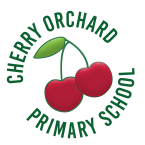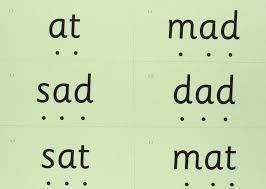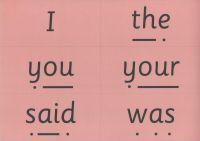Phonics and Early Reading
The Government strongly recommend the use of synthetic phonics when teaching early literacy skills to children. Synthetic phonics is simply the ability to convert a letter or letter group into sounds that are then blended together into a word.
Here at the Cherry Orchard School, we are using the Read Write Inc (RWI) programme to get children off to a flying start with their Reading. RWI is a method of learning based upon letter sounds and phonics, and we use it to empower children to become independent readers.
Reading opens the door to learning. A child who reads a lot will become a good reader. A good reader will be able to read more challenging material. A child who can read more challenging material is a child who will learn. The more a child learns, the more he or she will want to find out.
The children are assessed regularly and grouped according to their ability. They will work with a RWI trained teacher or teaching assistant.
Our Read Write Inc Reading Leader is Mrs Davies.
Reading
When using RWI to read the children will:
- Learn 44 sounds and the corresponding letter/letter groups using simple prompts
- Learn to read words using sound blending (Fred talk)
- Read lively stories featuring words they have learnt to sound out
- Show that they comprehend the stories by answering 'Find It' and 'Prove It'
Writing
When using RWI to write the children will:
- Learn to write the letter/letter groups which represent the 44 sounds
- Learn to write words by saying the sounds and graphemes (Fred fingers)
Talking
When using RWI the children will also work in pairs:
- To answer questions
- To take turns talking and listening to each other
- To give positive praise to each other
Year 1 and 2.
Children follow the same format as Reception, but will work on complex sounds and read books appropriate to their reading level. There will be daily sessions of RWI phonics – speed sounds and storybooks.
Parent video: How to say the sounds
At school we use a puppet called Fred who is an expert on sounding out words! We call it, ‘Fred Talk’. E.g. m-o-p, c-a-t, m-a-n, sh-o-p, b-l-a-ck.
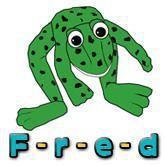
Read Write Inc. Phonics: Ruth Miskin on how to teach blending to children
Ruth Miskin demonstrates how to teach children phonics through assisted word blending. You can find out more about Ruth's Read Write Inc. Phonics approach at...
The children are taught the sounds in 3 sets:
Set 1 Sounds are taught in the following order together with rhymes to help children form the letters correctly and instantly recognise sounds ready for blending.
|
Set 1 |
|
|
Sound |
Rhyme |
|
m |
Start on the line, Maisie, mountain, mountain. |
|
a |
Start on the line, round the apple and down the leaf |
|
s |
Start on the line, slither down the snake and sss |
|
d |
Start on the line, round his bottom, up his tall neck and down to his feet |
|
t |
Start on the line, up to the top, down the tower and across the tower |
|
i |
Start on the line, down the body and dot for the head |
|
n |
Start on the line, down Nobby and over his net |
|
p |
Start on the line, down the pirate’s plait, up and over the pirate’s face |
|
g |
Start on the line, round her face, down her hair and give her a curl |
|
o |
Start on the line, all around the orange and peel |
|
c |
Start on the line, curl around the caterpillar |
|
k |
Start on the line, up to his head, down the kangaroo’s body, around his tail and down his leg |
|
u |
Start on the line, down and under, up to the top and draw the puddle |
|
b |
Start on the line, up the boot, down the laces to the heel, round the toe and kick |
|
f |
Start on the line, up to the petals, down the stem and across the leaves |
|
e |
Start on the line, lift off the top, and scoop out the egg |
|
l |
Start on the line, up to the shorts and down the long leg |
|
h |
Start on the line, up to the head, down to the hooves and over his back |
|
sh |
|
|
r |
Start on the line, down his back, then up and curl over his arm |
|
j |
Start on the line, down his body, curl and dot |
|
v |
Start on the line, down a wing, up a wing |
|
y |
Start on the line, down a horn, up a horn and under his head and draw his tail |
|
w |
Start on the line, down, up, down, up |
|
th |
|
|
z |
Start on the line, zig-zag-zig |
|
ch |
|
|
qu |
Start on the line, round her head, up past her earrings and down her hair |
|
x |
Start on the line, down the arm and leg and repeat on the other side |
|
ng |
A thing on a string |
|
nk |
I think I stink |
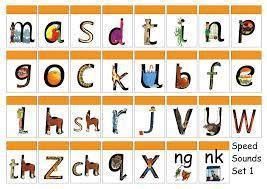
Step 2:
The children are then taught Set 2 Sounds - the long vowels. When they are very confident with all of set 1 and 2 they are taught Set 3 Sounds.
|
Long vowel sound |
Set 2 Speed Sound cards
|
Set 3 Speed Sound cards |
|||
|
ay |
ay: may I play |
a-e: make a cake |
ai: snail in the rain |
||
|
ee |
ee: what can you see |
ea: cup of tea |
e: he me we she be |
e-e: go Pete and Steve |
|
|
igh |
igh: fly high |
i-e: nice smile |
|||
|
ow |
ow: blow the snow |
o-e: phone home |
ao: goat in a boat |
||
|
oo |
oo: poo at the zoo |
u-e: huge brute |
ew: chew the stew |
||
|
oo |
oo: look at a book |
|
|
||
|
ar |
ar: start the car |
|
|
||
|
or |
or: shut the door |
aw: yawn at dawn |
|
||
|
air |
air: that’s not fair |
are: share and care |
|
||
|
ir |
ir: whirl and twirl |
ur: nurse for a purse |
er: a better letter |
||
|
ou |
ou: shout it out |
ow: brown cow |
|
||
|
oy |
oy: toy for a boy |
oi: spoil the boy |
|
||
|
ire |
|
ire: fire fire! |
|
||
|
ear |
|
ear: hear with your ear |
|
||
|
ure |
|
ure: sure it’s pure? |
|
||
|
tion |
tion: pay attention it’s a celebration |
|
|
||
|
tious, cious |
scrumptious, delicious |
|
|
||
|
ue |
Come to the rescue |
|
|
||
|
ie |
Terrible tie |
|
|
||
|
au |
Paul the astronaut |
|
|
||
|
kn |
Knock, knock, who’s there? |
|
|
||
|
ck |
Tick, tock, clock |
|
|
||
|
wh |
Whisk, whisk |
|
|
||
|
ph |
Take a photo |
|
|
||
Nonsense Words (Alien Words)
As well as learning to read and blend real words children will have plenty of opportunities to apply their sound recognition skills by reading ‘Nonsense words’. These words will also feature heavily in the Year One Phonics Screening check in the summer term. b-r-a-nk sh-u-d c-l-ai-t
|
|
|
Dots and dashes represent the sound each letter makes.
Reading Books Sent Home
Children in Reception who are learning the first 44 letter sounds and are not blending fluently will bring home sound sheets, sound blending books, picture books and a library book for you to read with them.
Once children can blend fluently, they bring home a RWI book, book o read for pleasure and a library book.
Please encourage your child to read though the speed sounds page first, then the green and red words pages to practise these words and help with fluency. Then check your child understands the meaning of words on the vocabulary check page before they start reading the book. Your child will have read this book at least three times at school before they bring it home. They should be able to read this book with fluency and expression by the time they bring it home and they should have a good comprehension of what the book is about. At the back of the book are find it/prove it questions for you to do with your child.
Finally, don't worry if your child is struggling at first with their sounds and words, they will get there in their own time. If you have time (we know it is very precious!), we would urge you to try and read stories to your child before they go to bed. This will help develop a wider vocabulary which makes a vast difference to their quality of writing, but it will also encourage them to enjoy a good story
Phonics Screening Check
What is the Year 1 phonics screening check?
The Year 1 phonics screening check is a short, light-touch assessment to confirm whether individual pupils have learnt phonic decoding to an age - appropriate standard. It will identify the children who need extra help so they are given some extra support in Year 2 to improve their reading skills.
Phonics Screening Check Follow the link to find out more about the year 1 Phonics Screening Check.
